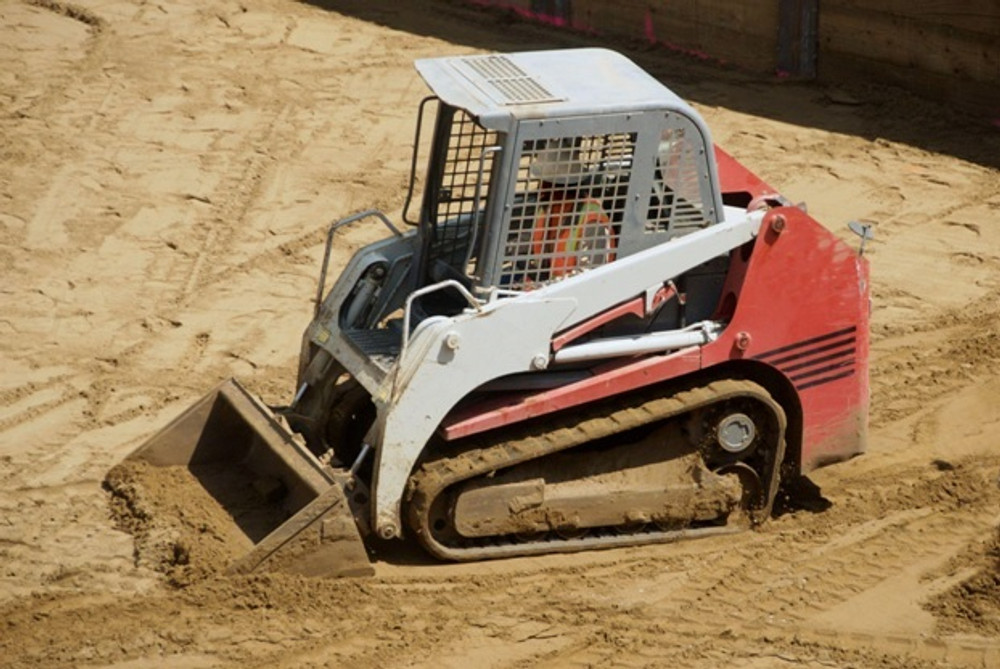Skid Loader Maintenance 101
Posted by Lee Padgett on 15th Oct 2024
Your skid loader may just be the most versatile, capable piece of equipment you own, whether you work on a farm, a construction site, or something in between the two.
Armed with appropriate skid steer attachments, there’s very little these machines can’t do, and then can often replace larger, dedicated machines like excavators and trenchers, just by equipping them with the right attachments.
With that said, your skid loader will go the distance most favorably when you give it the appropriate care and attention it deserves. With that said, here’s a quick overview of basic maintenance and inspections you can perform to catch issues before they become bigger than they need to be.
Daily Maintenance (Before Each Use)
Before you use your skid steer loader, you should always perform a “pre-flight” inspection, if you will. Here are some things to inspect:
- Take a quick look at the machine’s service chart and make sure you’re not overdue for any scheduled maintenance. Doing this every time you use the machine will keep you up to date.
- Check the oil level via the dipstick and add oil if necessary.
- Check the fuel-water separator and drain if needed.
- Check the coolant level via the sight gauge and add coolant if you need to.
- Check the cabin air filter and inspect the seals for damage; replace the filter if necessary.
- For a compact track loader, check the track tension.
- For skid steer loaders, check the tires (more details below).
- Check the lift arms at the front of the machine and inspect hydraulic hoses for any signs of damage.
- Check the hydraulic oil level via the sight gauge and add if necessary.
- Check to make sure your engine has enough DEF (diesel exhaust fluid) and fill if needed.
- Remove any debris or dirt between the attachment and coupler plate.
- Check all grease fittings and pack with grease if needed.
Inspecting Fluids
The fluids in your skid loader, such as engine oil, coolant, and hydraulic fluid, all play vital functions in ensuring smooth operation.
Inspect as advised in above, and replace as necessary. These fluids prevent heat and wear damage to your machine and should be maintained at the recommended level.
Two notes are as follows. If you notice that you need to keep refilling a specific reservoir a bit too frequently, it could be an indicator of a leak. Inspect the system and fix the affected part if necessary.
The other is that before you check hydraulic fluid levels/pressure, lower the loader arm or attachment so that the fluid flows back to the reservoir so you can take an accurate reading.
Inspecting Tires
Before using your skid steer loader, always check the condition and pressure of all four tires. This is a matter not only of efficiency and fuel economy, but of safety.
If your skid steer loader has tires filled with air, be sure to check the pressure and fill as necessary to ensure optimal performance and even tire wear. If the loader has foam filled tires or tracks you can disregard this step.
However, you should still check the condition of the tracks and of the tire’s treads to ensure that they are in good order, not excessively worn, and that they don’t show signs of cracking. If the loader has tracks make sure the tension is set appropriately.
Also, if you notice that one side of the machine, or that one set (front or rear) of tires is wearing faster than the others, have the tires rotated to even out the wear.
Keeping It Clean
Believe it or not, simply keeping your skid loader clean is a big part of routine maintenance. This is because dirt, mud, and salt deposits can accelerate wear and cause corrosion.
Simply washing off your machine will go a long way towards preventing this. Also, make sure when cleaning that all maintenance placards and safety decals are clean, clear, and easily legible.
Special Notes for When It’s Hot or Cold
When using your skid loader in extreme heat or cold, special notes are in order. In the heat, make sure the radiator is clean and that the coolant level is properly set.
In the cold, make sure that oil is not too viscous and hasn’t turned to a gel; trying to operate a machine with oil of inadequate viscosity can cause serious damage to the engine.
Stick to Maintenance Schedules
Your machine likely has a manufacturer recommended maintenance schedule with services advised for the 250, 500, and 1000 hour-marks. Make sure to stick to these in order to keep to any manufacturer warranties as well as to ensure the optimal health of the machine.
Here for the Industry’s Toughest Skid Loader Attachments?
Spartan Equipment skid steer attachments are made in the United States from American steel and will Never Surrender. They convert your skid loader into a machine optimized for snow removal, tree planting, construction and demolition, excavation, and so much more.
Take a look through our collection, stick to the maintenance tips outlined here and get in touch with us at 888-888-1085 if you have any questions before buying.


